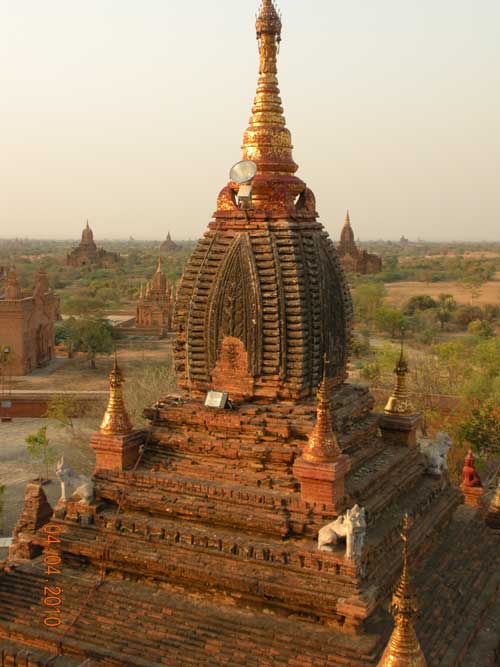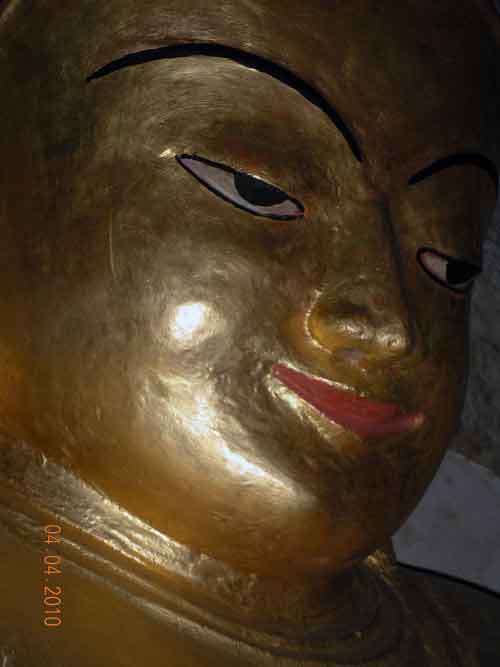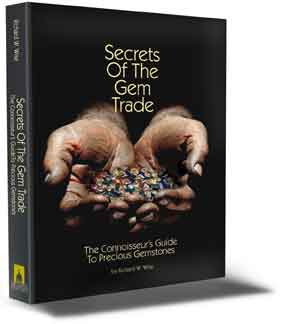
The view from the top of a temple showing some of the estimated four thousand temples and pagodas in the Burmese town of Bagan: Photo: R. W. Wise
by Richard W. Wise, G.G.
©2010
Its hot in Burma but the early morning in Bagan is cool and breezy. Just off our porch with its planked and varnished teak floors, a broad leaved Banana Palm nods sagely in the light breeze, a giant Acacia tree bends its ancient back, its knarled branches splayed like arthritic limbs form an umbrella over our villa’s roof. A manicured lawn lies between us and the wide Irrawaddy River. From the opposite bank, along a ridge of ragged hills, a glint of gold off a temple dome flickers through the dawn shroud of silvered white mist. The mist clings though the day, turning to blue as the morning wears on. It is the dry season and the Irrawaddy, the mother of rivers, has receded leaving a broad expanse of bare sandy shoulder exposed on either bank.
Located in the central part of the country, ancient Bagan was the center of a city-state that flourished between the 10th and 12th Centuries until Kublai Khan’s Mongols ravaged the place in the mid 13th Century. Today, the chief reason to visit is to see the 3,000 or so temples and pagodas that punctuate the parched countryside. As our guide tells us, a pagoda is solid; a temple is hollow like a church with golden statues of the Buddha inside. During the height of Bagan’s prosperity, kings constructed the largest temples as monuments to their power and perhaps more importantly, as a way to gain cosmic merit so that after their deaths they might be reborn as some higher level of being.
At The Ruby Mines:
It is tempting to believe that the lack of fine ruby in the world market is the result of the U. S. embargo, but it is not. Burma is flanked by India and China and both these emergent powers are far more important trading partners than is the United States. The Indians have always greatly valued ruby—in the 17th Century, French dealer Jean Baptiste Tavernier wrote of buying rubies in Europe and bringing them to India because he could get better prices from the Mogul nabobs— and China’s nouveau riche have developed a taste for luxury goods. No, it is simply that, after a thousand years, the ruby, at least the accessible ruby has been mined out. Certainly this is true of Mogok’s secondary deposits; every bit of alluvium in the mountain valley has been turned over not once, but a hundred times. Mogok village itself was once moved to get at the gemstones and the small lake at the valley’s floor is a flooded excavation. According to my Burmese agent, a Shan tribesman born in Mogok, there are still gems buried in the hardrock, but they are deeper and require blasting, heavy equipment and much more capital to mine. Investors, however, are rather reluctant to invest.
More to come…





